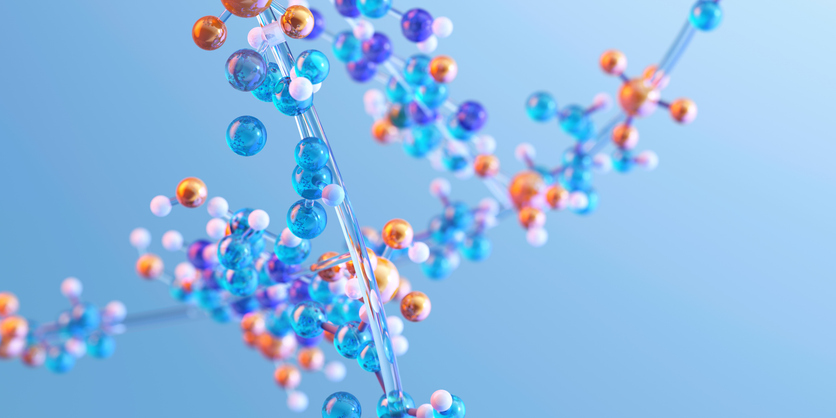
The challenge of peptide stability and half-life extension represents one of the most critical obstacles in peptide drug development, directly impacting therapeutic efficacy, dosing frequency, and commercial viability of peptide-based medicines. Native peptides, while offering exquisite biological specificity, are inherently susceptible to rapid degradation by endogenous proteases, oxidation, and other chemical modifications that severely limit their therapeutic utility.
At Adesis, we apply advanced chemical strategies and innovative modification techniques to overcome these fundamental limitations, transforming unstable peptide sequences into robust therapeutic candidates with enhanced pharmacokinetic properties and extended half-lives that enable practical clinical applications. Our process chemistry capabilities encompass the full spectrum of peptide modification technologies necessary to address these complex challenges while maintaining therapeutic efficacy.
Understanding Peptide Stability Challenges
Peptide instability in biological systems stems from multiple degradation mechanisms that work synergistically to eliminate these molecules from circulation rapidly. The primary challenges include proteolytic degradation by endogenous enzymes, chemical modifications such as oxidation and deamidation, physical instability including aggregation and precipitation, and rapid renal clearance due to small molecular size.
The complexity of biological degradation mechanisms requires a comprehensive understanding of enzyme specificity, kinetics, and tissue distribution to develop effective stabilization strategies. Different tissues and compartments present unique stability challenges, with the gastrointestinal tract, liver, kidneys, and circulation each containing distinct enzyme profiles that must be considered in peptide design and modification strategies.
Proteolytic Degradation Pathways
Endogenous proteases can be broadly classified into several categories based on their mechanism of action and substrate specificity. Aminopeptidases cleave amino acids from the N-terminus, carboxypeptidases remove amino acids from the C-terminus, and endopeptidases cleave internal peptide bonds at specific recognition sequences.
Understanding protease specificity is crucial for predicting peptide stability and designing appropriate modifications. For example, dipeptidyl peptidase-4 (DPP-4) specifically cleaves peptides with proline or alanine in the second position, while neprilysin targets peptides with hydrophobic amino acids at specific positions.
Chemical Modification Strategies
The development of chemically stabilized peptides requires strategic modification of amino acid residues, peptide backbone structures, and terminal groups to resist degradation while maintaining biological activity. These modifications can be broadly categorized into amino acid substitutions, backbone modifications, and conformational constraints that collectively enhance stability through multiple mechanisms.
Backbone modifications involve alterations to the peptide chain structure itself, including the incorporation of non-natural linkages, beta-amino acids, and other structural modifications that maintain biological activity while conferring resistance to proteolytic degradation. Our discovery chemistry expertise encompasses comprehensive capabilities for designing and synthesizing these complex modified peptides.
Amino Acid Modifications and Substitutions
D-amino acid substitutions represent one of the most effective strategies for enhancing peptide stability, as most endogenous proteases are highly specific for L-amino acids and cannot cleave peptide bonds involving D-residues. The strategic placement of D-amino acids at key positions can dramatically enhance the half-life while maintaining biological activity.
N-methylated amino acids provide another powerful stabilization strategy by removing the hydrogen bond donor capability of the peptide backbone, which disrupts protease recognition and binding. This modification is particularly effective when applied to amino acids adjacent to known cleavage sites.
The incorporation of non-natural amino acids with enhanced stability properties offers additional opportunities for peptide optimization. These modifications can include fluorinated amino acids that resist oxidation, constrained amino acids that limit conformational flexibility, and amino acids with modified side chains that eliminate specific degradation pathways.
Cyclization and Conformational Constraints
Peptide cyclization represents a particularly powerful stabilization strategy that constrains molecular conformation while simultaneously protecting terminal amino acids from exopeptidase degradation. Cyclization can be achieved through various chemical linkages, including disulfide bonds, lactam bridges, and metal coordination complexes.
Head-to-tail cyclization eliminates both N- and C-terminal degradation pathways while potentially enhancing target binding through conformational restriction. Side chain-to-side chain cyclization offers additional opportunities to constrain peptide structure and enhance stability while maintaining terminal groups for further modification.
The design of cyclic peptides requires careful consideration of ring size, flexibility, and the impact of cyclization on biological activity. Our analytical capabilities support the comprehensive characterization of cyclic peptides, including conformational analysis and stability assessment.
Conjugation and PEGylation
Polymer conjugation, particularly PEGylation, represents a widely used strategy for extending peptide half-life through increased molecular size and reduced renal clearance. Polyethylene glycol (PEG) conjugation also provides some protection against proteolytic degradation by creating steric hindrance around potential cleavage sites.
The selection of PEG molecular weight, attachment site, and conjugation chemistry significantly impacts the pharmacokinetic profile and biological activity of the resulting conjugate. Larger PEG molecules provide greater half-life extension but may interfere with target binding, requiring careful optimization to achieve optimal therapeutic properties.
Alternative conjugation strategies include albumin binding domains that utilize endogenous albumin recycling pathways to extend half-life, and Fc fusion proteins that leverage antibody recycling mechanisms to achieve extended circulation times.
Advanced Stabilization Technologies
Recent advances in peptide stabilization have introduced innovative technologies that go beyond traditional modification approaches. These cutting-edge strategies include peptide stapling, advanced cyclization methods, and novel delivery systems that provide unprecedented levels of stability and bioavailability.
Peptide stapling involves the introduction of covalent cross-links between amino acid side chains to constrain peptide conformation and enhance proteolytic resistance. This technology has proven particularly valuable for developing cell-permeable peptides that can access intracellular targets while maintaining stability in biological environments.
Advanced delivery systems, including nanoparticle encapsulation, liposomal formulations, and implantable device,s provide physical protection from degradative enzymes while enabling controlled release kinetics that maintain therapeutic levels over extended periods.
Stapled Peptides and Macrocyclization
Peptide stapling technology involves the incorporation of non-natural amino acids that can be chemically cross-linked to create constrained peptide structures with enhanced stability and biological activity. The most common stapling approach uses metathesis chemistry to form hydrocarbon staples that span one or two helical turns.
Stapled peptides demonstrate remarkable resistance to proteolytic degradation while often showing enhanced target binding affinity due to reduced conformational entropy. This technology has been particularly successful in developing inhibitors of protein-protein interactions that were previously considered undruggable targets.
Delivery System Integration
Nanoparticle delivery systems offer opportunities to protect peptides from degradation while providing targeted delivery to specific tissues or cellular compartments. These systems can incorporate multiple stabilization mechanisms, including physical protection, controlled release, and targeting ligands that enhance therapeutic efficacy.
Liposomal formulations offer an alternative approach to peptide stabilization by encapsulating peptides within lipid bilayers, which protect against enzymatic degradation while facilitating controlled release kinetics. The development of long-circulating liposomes has enabled a significant extension of the half-life for encapsulated peptides.
Analytical Methods for Stability Assessment
A comprehensive stability assessment requires sophisticated analytical methods that can detect and quantify various degradation pathways, providing insights into degradation mechanisms and kinetics. These methods must be sensitive, specific, and capable of distinguishing between different degradation products to support the development of effective stabilization strategies.
High-resolution mass spectrometry represents the gold standard for peptide stability analysis, providing definitive identification of degradation products and enabling detailed characterization of degradation pathways. This analytical capability is essential for understanding how chemical modifications affect stability and for optimizing stabilization strategies.
Bioactivity assays are equally important for ensuring that stability enhancements do not compromise therapeutic efficacy. These assays must be carefully designed to reflect the intended mechanism of action while providing sensitive detection of activity changes that may result from chemical modifications. Our comprehensive analytical capabilities support both stability assessment and bioactivity evaluation throughout the peptide development process.
The integration of stability data with pharmacokinetic studies provides essential information for predicting in vivo performance and optimizing dosing regimens for stabilized peptides. This integrated approach ensures that laboratory stability improvements translate to meaningful therapeutic advantages in clinical applications.
Adesis’s Expertise in Peptide Stabilization
At Adesis, our approach to peptide stabilization combines deep scientific expertise with practical experience in developing commercially viable peptide therapeutics. Our team’s understanding of structure-activity relationships, degradation mechanisms, and modification chemistry enables us to design effective stabilization strategies while maintaining essential biological properties.
The integration of our peptide stabilization expertise with process development capabilities enables seamless transition from laboratory-scale optimization to commercial manufacturing. This comprehensive approach ensures that stabilized peptides can be produced consistently and cost-effectively at scales required for clinical development and commercial supply.
Our collaborative approach involves working closely with pharmaceutical partners to understand their specific stability requirements and develop customized solutions that address unique challenges, while supporting both regulatory and commercial objectives. This partnership model has proven highly effective in advancing stabilized peptides through development pipelines to successful commercial products.
Enhance Your Peptide Therapeutics with Advanced Stabilization
The future of peptide therapeutics depends on continued innovation in stabilization technologies that overcome traditional limitations while unlocking new therapeutic possibilities. At Adesis, we remain committed to advancing the state of the art in peptide stabilization through continued research, technology development, and collaborative partnerships with innovative pharmaceutical companies.
If you’re developing novel peptide therapeutics, optimizing existing peptide drugs, or addressing specific stability challenges, our team of experts stands ready to apply our comprehensive stabilization capabilities to your unique requirements. Contact our peptide stabilization specialists today to transform your peptide candidates into stable, effective therapeutics with enhanced pharmacokinetic properties and improved clinical potential.


